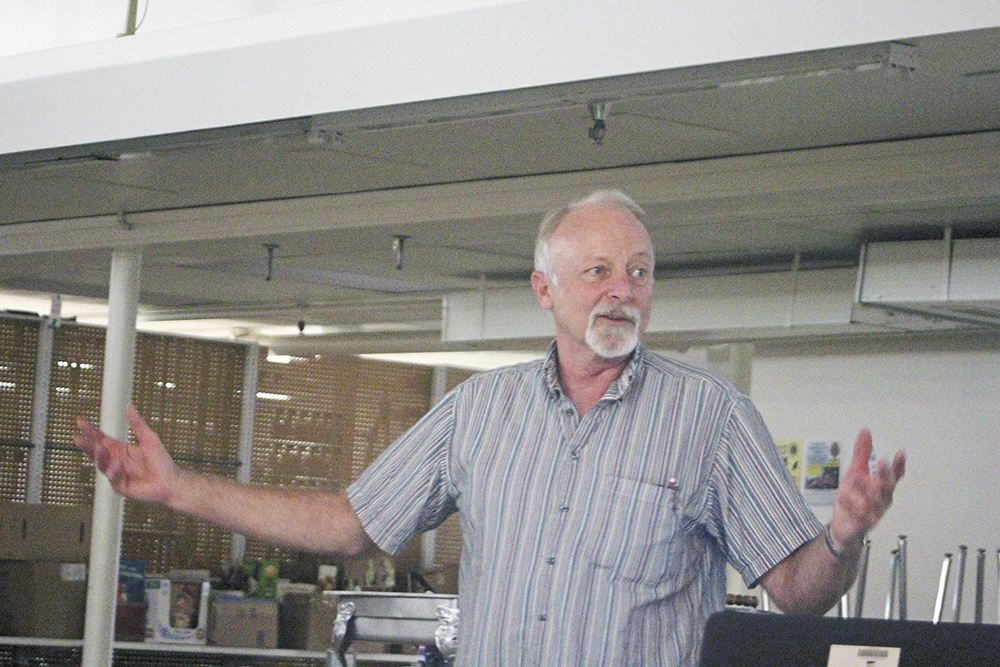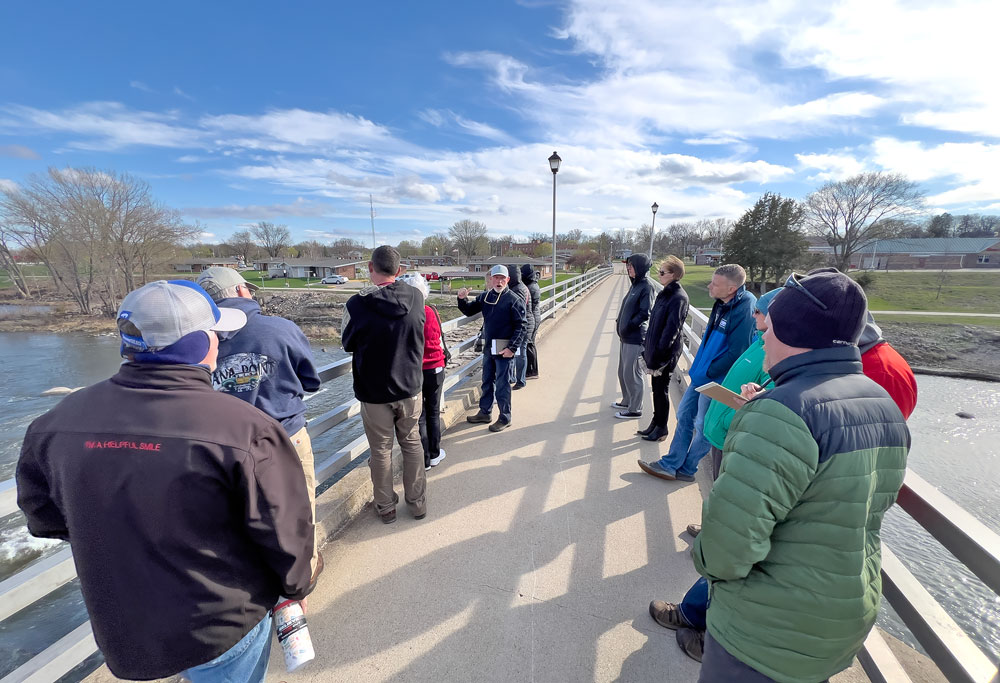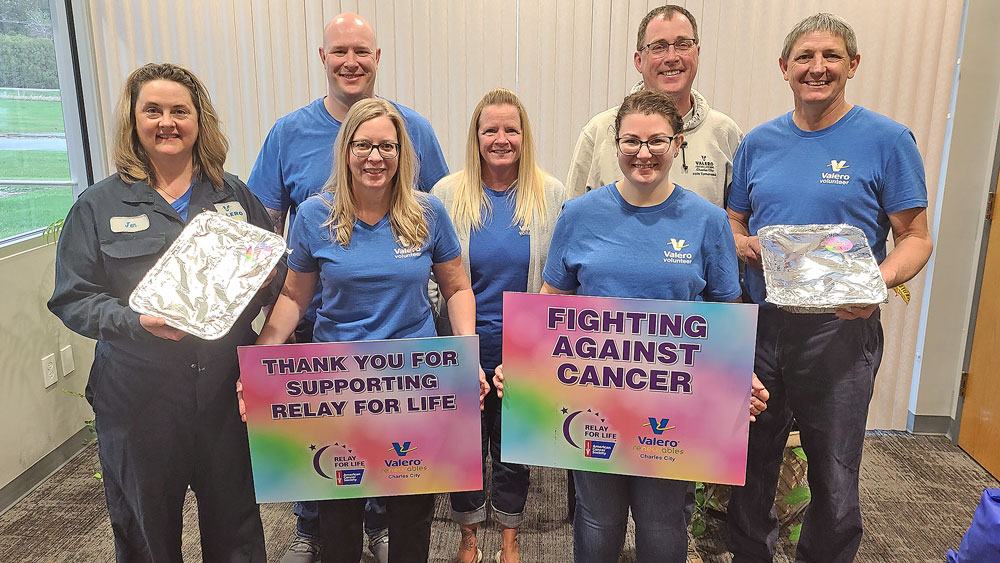Johnson explains watershed project to Lions Club

By James Grob, jgrob@charlescitypress.com
Doug Johnson explained the goals of the Charles City Watershed Project to the Lions Club members via a PowerPoint presentation at the club’s weekly lunch meeting on Friday.
Johnson is the Charles City Watershed Project coordinator for the Floyd County Soil and Water Conservation District. Hired in early February, he oversees the 35,000-acre Charles City watershed.
“The Charles City watershed is basically three main streams — Stewart Creek, Wildwood Creek and the Washington School watershed — west of town toward Rudd and northeast of town about three miles is basically the watershed area,” he said.
According to Johnson, the watershed consists of 139 property owner-operators as well as 146 landowners who are not operators. The land is made up of 39% corn, 29% soybeans, 15% grassland and 8% woodland and is predominantly artificially drained.
Johnson, a retired farmer and a conservation specialist for 32 years, said his role as the project coordinator includes outreach, education, partnership building, water quality monitoring and conservation planning.
Much of Johnson’s work focuses on helping implement the best management practices to assist farmers and landowners in limiting pesticide runoff.
He was hired by the soil and water conservation district in a partnership that also includes Charles City, the Iowa Soybean Association, the Iowa Agriculture Water Alliance, the U.S. Department of Agriculture and the Natural Resources Conservation Service as well as the local Pheasants Forever Chapter.
He said the watershed citizens can positively effect water quality improvement, foster a positive image of farmers, reduce loss for more profit and sustain long-term crop value.
“No one wants regulation,” Johnson said. “With regulation, you sometimes get a one-size-fits-all approach, and that makes it more difficult for everyone.”
Johnson said that the watershed consists of somewhat poorly-drained soils, and parts of the Cedar River are seasonally impaired for drinking water use due to high nitrate levels. The upper Cedar River watershed is the largest contributor of nitrates to the middle Cedar River, and agriculture is the largest source of those nitrates through fertilizer and manure.
The goal of the Iowa Department of Natural Resources is to reduce agricultural sources of nitrogen by 37%. Johnson explained that this goal can be reached through the planting of cover crops, continuous no-till and strip-till development and nitrate management. Prairie strips, saturated buffers and wetland sites are among the many things that help manage nitrate and phosphorus levels.
Urban water quality protection goals include permeable paving projects and additional urban stormwater management practices.
Johnson said the goal of the project is to install 10 additional urban stormwater management projects by 2024, as well as convince farmers to plant 10,000 acres of cover crops in that time. Additionally, the project hopes to install 15 bioreactors and/or saturated buffers by 2024 and increase the use of no-till and strip-till farming to 10,000 acres.
The Charles City Watershed Management Plan was created in February 2018. The grants were made possible because of Charles City’s new $18 million water resource recovery facility that is planned to be built by May 2022. The facility will replace the current 55-year-old wastewater treatment plant.
“The primary objective of the project is to work with farmers and landowners to increase the amount of acres of conservation practices that will reduce the potential loss of nutrients into the streams,” Johnson said. “I’m working with landowners to increase the number of acres of low-till farming, strip-till farming and cover crops to reduce soil erosion and runoff of nutrients into the streams.”







Social Share